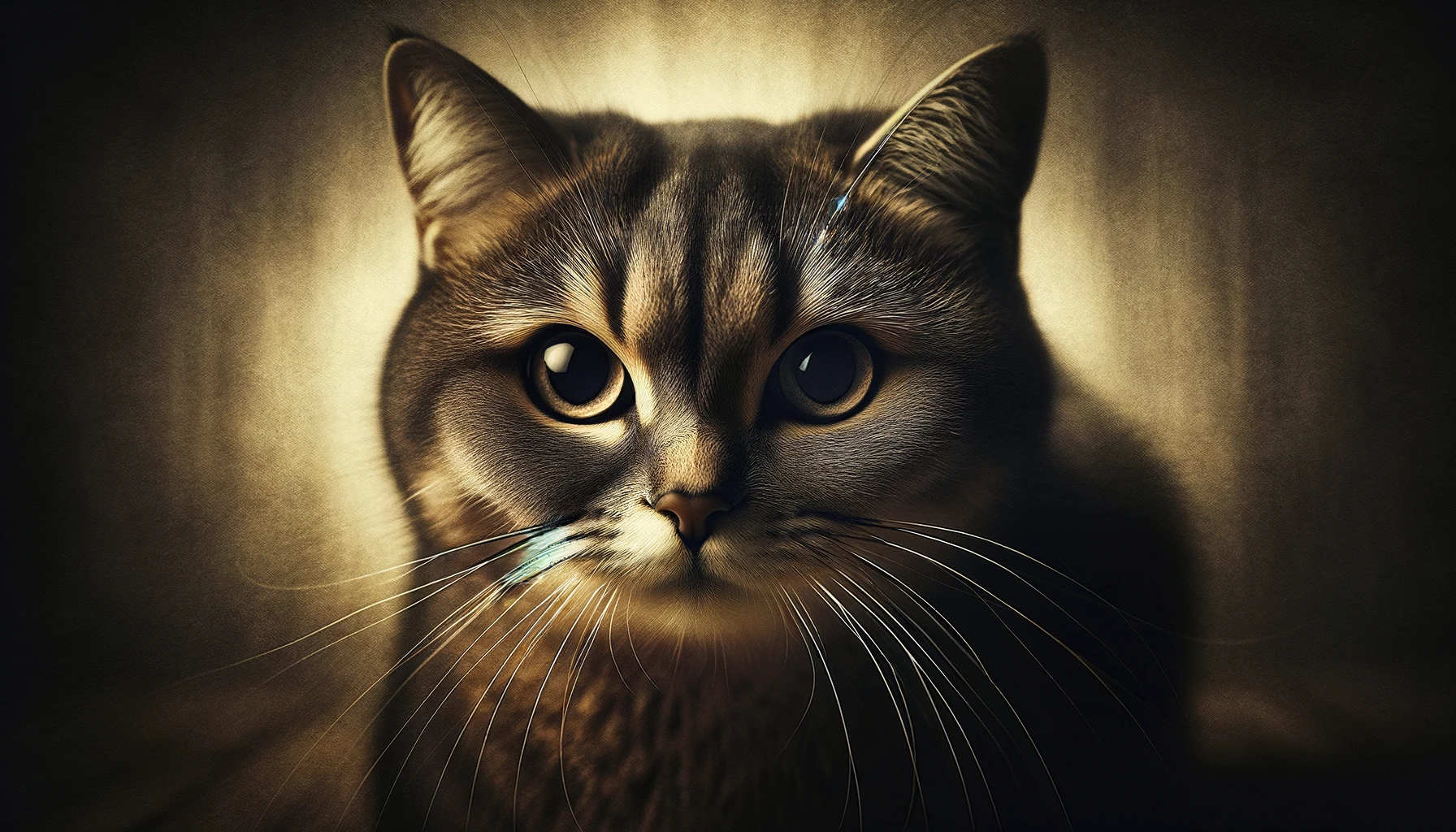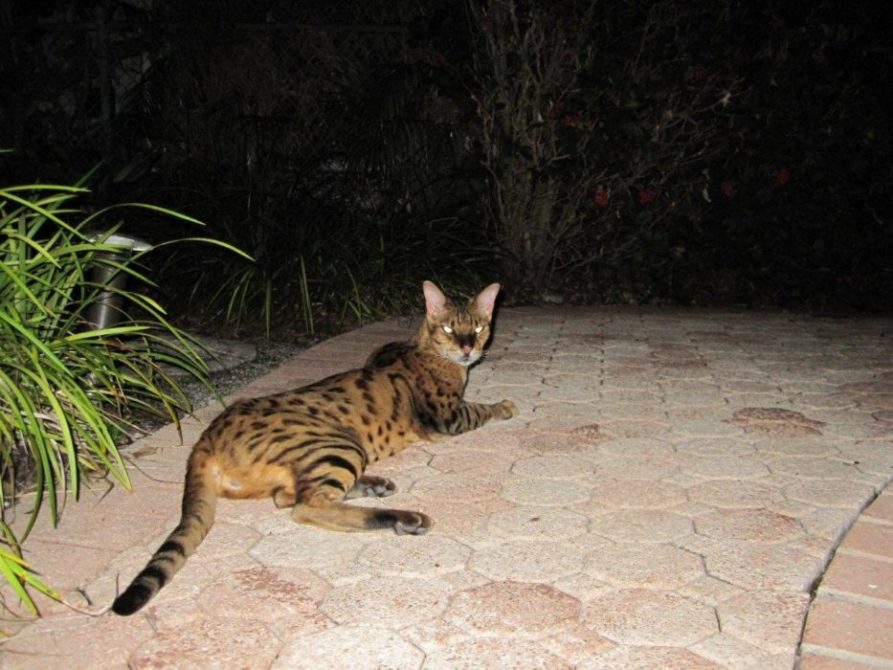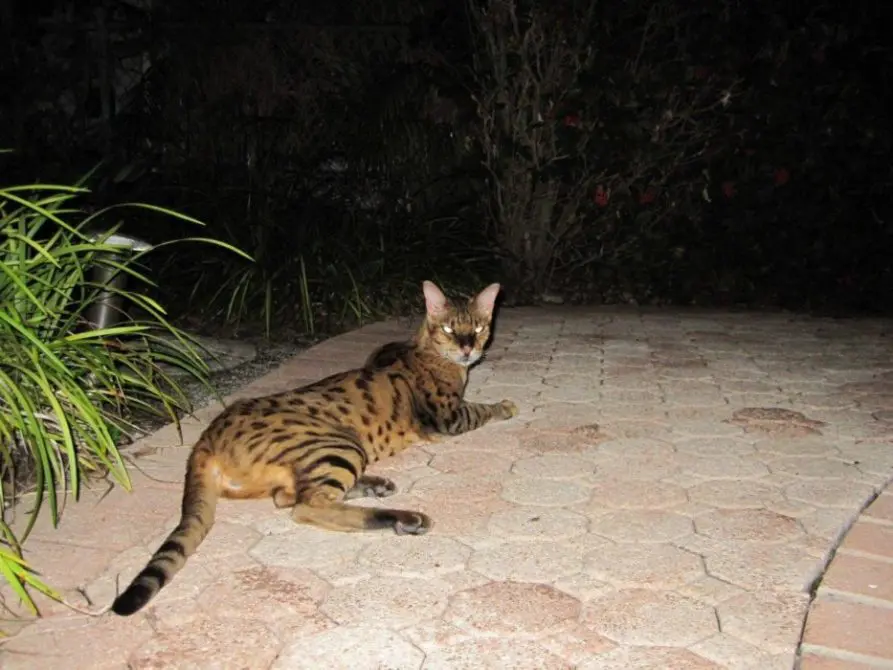A six-toed cat, also known as a polydactyl cat, possesses extra toes on its paws. This genetic trait can occur in many cat breeds and is not harmful to their health.
Polydactyl cats, often called “Hemingway cats,” delight cat enthusiasts with their unique physical trait—more than the usual number of toes on their paws. This intriguing genetic variation results in cats that may have six, seven, or even more toes on one or more of their feet.
It’s a naturally occurring mutation that has been seen in cat populations around the world, often celebrated for its novelty and adored by pet owners for the distinctive appearance it gives their feline friends. Despite the unusual toe count, polydactyl cats are just as playful, affectionate, and agile as their five-toed counterparts. These extra-toed kitties are not only charming but also historically were considered to bring good luck, especially to sailors who believed they were superior mousers.

Credit: www.cattipper.com
The Six-toed Phenomenon
Cats typically have five toes on their front paws and four on the back. Occasionally, some cats boast an extra toe, or even several, on each paw. This intriguing characteristic is known as polydactylism, which literally means “many digits”. It’s not just a quirky feature; it’s a genetic phenomenon that has captured the attention of cat lovers and scientists alike. Let’s delve into the mystery of the six-toed cat and discover what makes these felines so fascinating.
Genetics Behind Extra Digits
Polydactyl cats possess more than the usual number of toes due to a genetic mutation. This mutation is typically inherited in an autosomal dominant manner. That means if one parent has the trait, there’s a good chance it will pass to the kittens.
The gene responsible for polydactylism is a point of interest for geneticists. It can result in different toe configurations, from a single extra toe to multiple. Some cats may have extra toes on just one paw, while others may have them on all four.
Historical Sightings And Myths
Six-toed cats have been around for centuries and they are steeped in folklore. In the past, sailors believed these cats to be good luck charms. They were thought to have better balance on ships, which made them prized members of the crew.
- Ernest Hemingway was famously given a six-toed cat by a ship’s captain.
- The author’s home in Key West is now a museum and sanctuary for these special cats.
In addition to these tales, various cultures have created myths surrounding the six-toed cat. Some legends declare them to be mystical creatures with otherworldly powers. Despite the lack of evidence for these claims, they add to the allure of these fascinating felines.
Polydactyl Cats In Pop Culture
The charm of polydactyl cats—often known as six-toed cats—extends far beyond their unique paws. These extra-toed kitties have pawed their way into the hearts of people globally. They stamp their mark on literature, art, and media.
Famous Felines And Their Stories
Many polydactyl cats became stars because of their unusual toes.
- Snowball: Once owned by writer Ernest Hemingway, he sparked a love for them at his Florida home.
- Mrs. Norris: This fictional cat in the Harry Potter series charmed fans with her character – though it’s unconfirmed if she had extra toes.
- Paws: Holding a Guinness World Record, this cat has a remarkable 28 toes.
Influencing Art And Literature
Polydactyl cats have a special place in creative works.
| Contributor | Work | Influence |
|---|---|---|
| Ernest Hemingway | Literature | Inspired by his cat, Snowball, many stories feature these multi-toed pets. |
| Edward Gorey | Illustrations | His signature style often included whimsical depictions of these distinctive cats. |
| T.S. Eliot | Poetry | Eliot’s work in “Old Possum’s Book of Practical Cats” may have been influenced by the charm of the polydactyl cat. |
Paw Anatomy And Health
Cats often captivate us with their graceful movements and agile antics, but have you ever marveled at the intricate design of their paws? Particularly, six-toed cats, also known as polydactyl cats, present a unique twist on the typical feline paw structure. Let’s explore the nuances of their paw anatomy and the health considerations these extra digits can entail.
Differences In Polydactyl Paws
Polydactyl cats showcase a fascinating genetic anomaly: they possess more than the usual five toes on the front paws and four on the back. This trait can result in paws with as many as eight toes each! The extra digits often resemble thumbs providing a wider, and sometimes more nimble, base for the cat’s antics.
- More Toes, More Traction: Extra toes may give these cats enhanced stability and climbing prowess.
- Diverse Toe Configurations: The positioning and size of these toes can vary, with some cats having fully functional extra digits.
Despite these differences, polydactyl paws function much like those of their five-toed counterparts, complete with retractable claws and sensitive pads.
Health Implications Of Extra Toes
While an extra toe or two might seem advantageous or merely quirky, they can come with health implications.
Regular monitoring and care are key for maintaining healthy polydactyl paws.
| Health Aspect | Consideration |
|---|---|
| Claw Care | Additional claws may require more frequent trimming to prevent ingrown nails or overgrowth that can lead to discomfort or mobility issues. |
| Debris Accumulation | Extra toes can collect more dirt and debris, necessitating regular cleaning to fend off infections. |
| Skeletal Health | Abnormal bone structures can sometimes occur, potentially leading to arthritic conditions as the cat ages. |
Moreover, vigilance for signs of irritation or infection is crucial, as extra toes can complicate paw injuries. It is advisable to conduct routine vet check-ups to ensure the well-being of these special felines.

Credit: bigcatrescue.org
Geographical Clusters Of Polydactyly
In the fascinating world of feline genetics, geographical clusters of polydactyly present a curious case. Polydactyly is the term for cats with more than the usual number of toes on their paws. Amongst cat lovers, these extra-toed felines are often affectionately referred to as “six-toed cats” or “Hemingway cats.” These unique cats don’t pop up just anywhere. Certain areas seem to be hotbeds for polydactyl kitties.
Hotspots For Six-toed Cats
So where do these charming cats cluster? Key West, Florida, is perhaps the most famous hotspot where the former home of Ernest Hemingway houses a significant number of six-toed cats. Hemingway’s affection for these cats led to the alternative name they often carry. Regions in the Northeastern United States and Southwestern England also report higher instances of polydactyl cats. These clusters spark curiosity about the genetic and environmental influences in these peculiar patterns of prevalence.
- Ernest Hemingway Home and Museum, Key West
- Boston and surrounding areas, Northeastern United States
- Southwestern England and Wales
Possible Reasons For Regional Prevalence
The concentration of polydactyl cats in specific regions may hinge on several factors. Some theories suggest that the mutation providing this polydactyl trait offered an advantage, perhaps in climates where larger paws might aid in hunting or stability. This trait may have helped cats aboard ships from Britain navigating icy decks or catching rodents, making them favorites among sailors. The genetic mutation could spread more readily in isolated populations where cats with this trait were more prevalent.
| Region | Possible Reasons for Prevalence |
|---|---|
| Key West, Florida | Cultural significance and Hemingway’s influence preserving the trait |
| Northeastern United States | Historical ship port locations and maritime advantages |
| Southwestern England | Sailing history and genetic isolation |
Whether it’s the charm of larger, mitten-like paws or the history tied to these special felines, six-toed cats surely hold a dear place in the hearts of cat enthusiasts. With careful genetic tracing and environmental studies, we might someday uncover the full story behind the polydactyl cat’s peculiar presence in certain corners of the globe. Until then, they remain an endearing mystery.
The Hemingway Home: A Feline Sanctuary
Nestled in the heart of Key West, Florida, stands a residence steeped in literary history. It’s none other than the Hemingway Home, a sunny haven that plays host to one of the most intriguing feline colonies in the world. This is not your typical cat home. These felines boast an eccentric genetic trait: six toes on each paw. Let’s dive into the alluring world of the Hemingway cats.
History Of The Hemingway Cats
The six-toed cats have roamed the Hemingway Home since the famous writer’s days, tracing back to the 1930s. Legend tells of a sea captain who gifted Ernest Hemingway a white six-toed cat named Snow White. This cat became the progenitor of the polydactyl lineage now synonymous with the site.
Visitors are enamored by these captivating creatures that wander the grounds and curl up on antique furniture. Hemingway himself was known for his love of cats, referring to them as “purr factories” and “love sponges”. It’s believed that the current six-toed feline residents are descendants from that original lineage.
Conservation Efforts For The Breed
The Hemingway Home is not just a tourist attraction; it’s a protective sanctuary for these unusual cats. These efforts involve maintaining a stable and controlled population.
- Veterinary care: Ensures medical well-being.
- Feeding and nutrition: Provides balanced diets.
- Shelter and safety: Comprises cat houses and safe sleep spots.
- Historical preservation: Keeps the cats as a living part of Hemingway’s legacy.
In essence, the Hemingway Home immortalizes the writer’s love for these polydactyl felines, safeguarding them for future generations to cherish.
Caring For A Polydactyl Cat
Welcome to the world of polydactyl cats, also affectionately known as “six-toed cats” or “Hemingway cats”. Caring for a polydactyl cat comes with a unique set of responsibilities. These felines have a genetic mutation that gives them more than the usual number of toes on their paws. While their extra digits make these kitties exceptionally cute, they also require special attention when it comes to grooming, claw care, and adoption considerations. Let’s explore the best practices to ensure your six-toed friend remains healthy and happy.
Grooming And Claw Care
Grooming a polydactyl cat takes a little extra time and attention. Their additional toes create more nooks and crannies where dirt and litter can hide. Regular brushing helps to minimize shedding and keeps their fur smooth.
- Brush your cat’s fur at least once a week.
- Inspect their unique paws during grooming sessions.
- Clean between their toes to prevent any buildup.
Claw care is also crucial for polydactyl cats. Trim their nails regularly to prevent overgrowth and related issues.
- Trim claws every few weeks to prevent snags or injuries.
- Use a sharp, cat-specific nail trimmer for clean cuts.
- Look out for ingrown nails, particularly in those extra toes.
Adoption Considerations
Before adopting a polydactyl cat, understand their needs. They are generally healthy, but
| Care Aspect | Consideration |
|---|---|
| Foot Inspections | More toes mean more potential foot issues. Regular checks are essential. |
| Special Needs | Some six-toed cats may require surgeries to correct foot abnormalities. |
| Social Considerations | Some polydactyl cats may need extra socialization to handle paw handling. |
Finding the right veterinary care, that understands these unique needs, ensures a long, happy life for your particularly pawed pet.

Credit: bigcatrescue.org
Frequently Asked Questions Of Six Toed Cat
What Causes Cats To Have Six Toes?
Polydactylism is a genetic mutation leading to extra toes on cats. It’s hereditary, resulting in the dominant trait for additional digits. Typically harmless, it adds to a cat’s unique charm.
Are Six-toed Cats Rare?
Six-toed cats, also known as polydactyls, are uncommon but not rare. They are most frequently found in certain regions, like the Northeastern United States and South West England.
Can Six-toed Cats Climb Better?
There’s anecdotal evidence suggesting six-toed cats may have better climbing abilities. The extra toes could provide a wider, and therefore more stable, base for gripping surfaces.
Do Six-toed Cats Require Special Care?
No special care is needed for six-toed cats. Owners should regularly clip their nails and check for any issues between the extra toes, just as with normal-toed cats.
Conclusion
In wrapping up, six-toed cats truly are remarkable creatures. This genetic quirk sets them apart, imbuing charm and uniqueness. Their polydactyl paws have captivated many and hold a special place in feline lore. If you’re ever graced by a six-toed kitty’s presence, cherish the extraordinary encounter.
Remember, these cats are not just pets; they’re living symbols of natural diversity.
